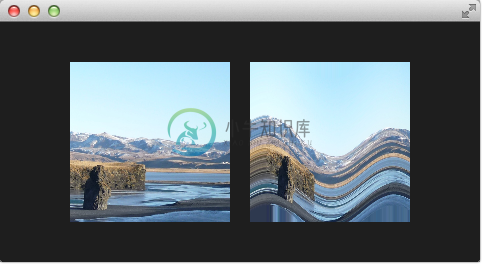9.4 波浪效果(Wave Effect)
优质
小牛编辑
134浏览
2023-12-01
在这个更加复杂的例子中,我们使用片段着色器创建一个波浪效果。波浪的形成是基于sin曲线,并且它影响了使用的纹理坐标的颜色。
import QtQuick 2.0
Rectangle {
width: 480; height: 240
color: '#1e1e1e'
Row {
anchors.centerIn: parent
spacing: 20
Image {
id: sourceImage
width: 160; height: width
source: "assets/coastline.jpg"
}
ShaderEffect {
width: 160; height: width
property variant source: sourceImage
property real frequency: 8
property real amplitude: 0.1
property real time: 0.0
NumberAnimation on time {
from: 0; to: Math.PI*2; duration: 1000; loops: Animation.Infinite
}
fragmentShader: "
varying highp vec2 qt_TexCoord0;
uniform sampler2D source;
uniform lowp float qt_Opacity;
uniform highp float frequency;
uniform highp float amplitude;
uniform highp float time;
void main() {
highp vec2 pulse = sin(time - frequency * qt_TexCoord0);
highp vec2 coord = qt_TexCoord0 + amplitude * vec2(pulse.x, -pulse.x);
gl_FragColor = texture2D(source, coord) * qt_Opacity;
}"
}
}
}
波浪的计算是基于一个脉冲与纹理坐标的操作。我们使用一个基于当前时间与使用的纹理坐标的sin波浪方程式来实现脉冲。
highp vec2 pulse = sin(time - frequency * qt_TexCoord0);
离开了时间的因素,我们仅仅只有扭曲,而不是像波浪一样运动的扭曲。
我们使用不同的纹理坐标作为颜色。
highp vec2 coord = qt_TexCoord0 + amplitude * vec2(pulse.x, -pulse.x);
纹理坐标受我们的x脉冲值影响,结果就像一个移动的波浪。

如果我们没有在片段着色器中使用像素的移动,这个效果可以首先考虑使用顶点着色器来完成。

